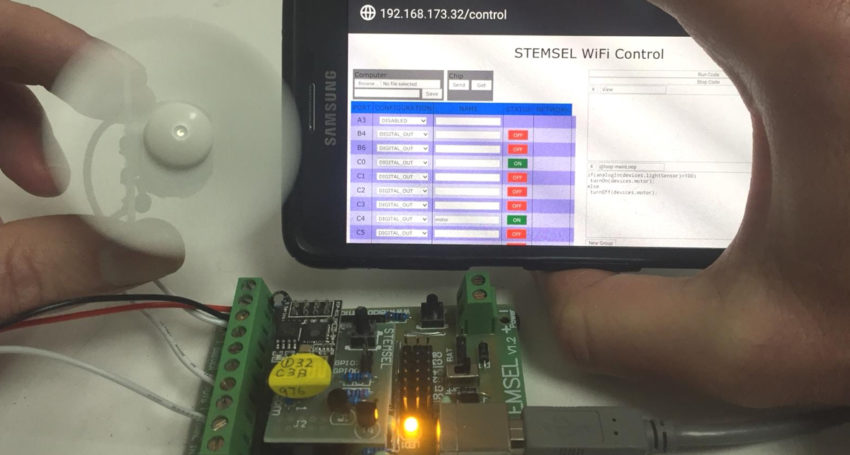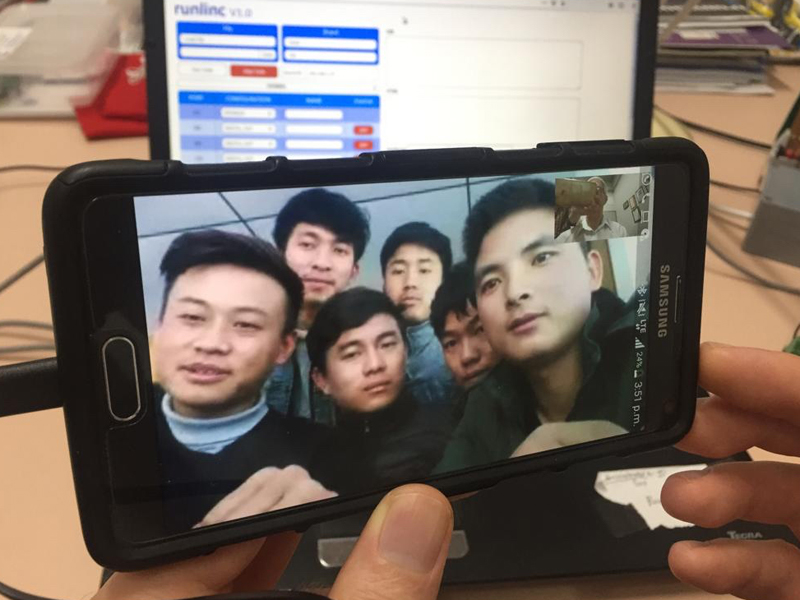Web on a chip technology fast tracks electronics development
Technology
A new electronics development platform that uses the internet to allow programming to be done directly onto a microchip is simplifying the creation of IoT and AI applications.

Sign up to receive notifications about new stories in this category.
Thank you for subscribing to story notifications.

The South Australian developer of the runlinc platform, eLabtronics, says the invention will soon become the “gold standard” for building electronic devices that draw on internet-based resources.
Unlike other electronic prototyping platforms, such as Arduino, runlinc’s development system and corresponding web page is already on the Wi-Fi chip, dramatically simplifying the programming process.
“It is a very disruptive technology – it is wireless – and one day there won’t be any more cables needed for programming,” inventor and eLabtronics Technology Manager Miroslav Kostecki said.
“Normally you’d have to go to the computer, do the programming, create some sort of interface and put all the things in to create a server and put it on a chip, go back and forth and do the de-bugging.
“Our web server is already on the chip so for the first time ever, the programming is no longer done inside the computer – runlinc is basically a single web page but it is sitting inside the Wi-Fi chip.”
The technology has been in development for the past five years and received global patent pending status in January.
Recent benchmark testing of runlinc against Arduino asked a team of six post-graduate students in Adelaide to build a web page and create some buttons to control two LED lights.
University of Adelaide student Alex Zhang said the task was completed in 30 minutes with six lines of code using runlinc but with Arduino it took 30 hours and more than 120 lines of code to finish the project.
Runlinc has also been used in Internet of Things tests to complete employer hack-a-thon tasks in record time.
eLabtronics CEO Peng Choo said the new development platform was being rolled out as fast as possible “from the ground up” by teaching young people how to use it.
He said the company was in the process of applying for a Centre for Defence Industry Capability (CDIC) grant to teach runlinc to school students as young as eight years old as part of the Australian Government’s focus on STEM education.

Miroslav Kostecki teaches the runlinc technology to students in Bhutan via a WhatsApp video session.
“The platforms at the moment are either too simple – like Lego – or too hard like Arduino,” Dr Choo said.
“We’ve actually invented something where suddenly they can do Artificial Intelligence, Internet of Things, they can create their own web pages and little apps from an early age.
“Runlinc is so easy to use that even upper primary school students can get started so can you imagine what it also does for industry when it’s that easy.”
While potential applications for the technology are almost endless, early uses include DIY smart home kits and IoT enabled sensing devices for farmers.
eLabtronics was started in South Australia by Dr Choo and Kostecki in 1994. It launched an education arm called STEMSEL in 2009. The not-for-profit organisation aims to teach disadvantaged children how to use electronics in combination with Social Enterprise Learning (SEL) and operates in Kyrgyzstan, Cameroon, India, Brunei, Malaysia, Nepal, Thailand, Philippines, Kenya, Bhutan, Australia and the United States.
Bhutanese innovator Dupjay Pelzang was the first person in his country to learn and master the runlinc platform. He is now incorporating it into electronic scarecrows for Bhutan’s Government that use AI and IoT to scare off a range of agricultural pests such as wild boars, deer, monkeys and elephants.
Pelzang will travel to neighbouring India in the coming months to teach runlinc to 3000 students at the 5000-student SSM College of Engineering near Chennai in the state of Tamil Nadu, which already has links with STEMSEL.

Dupjay Pelzang explains his scarecrow invention to visiting UN Under Secretary General Achim Steiner.
Dr Choo said the model for runlinc was for India to become a centre for its global expansion in the developing world.
“There are 6000 colleges like that operating in India accredited by the top universities and it won’t take more than three months before 3000 students will be training another 3000 high schools,” he said.
“They also have international students at that college in India from Nigeria, Kenya, Myanmar and Thailand so it will spread to those places soon.
“This technology is very much about a change of mindset because this program will run outside the chip.”
Jump to next article



